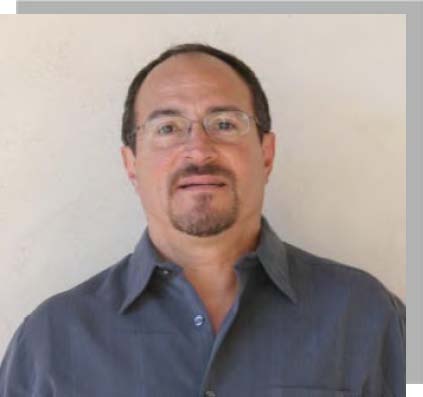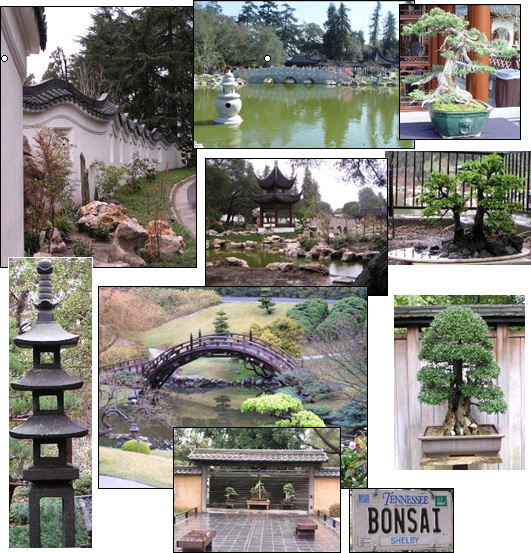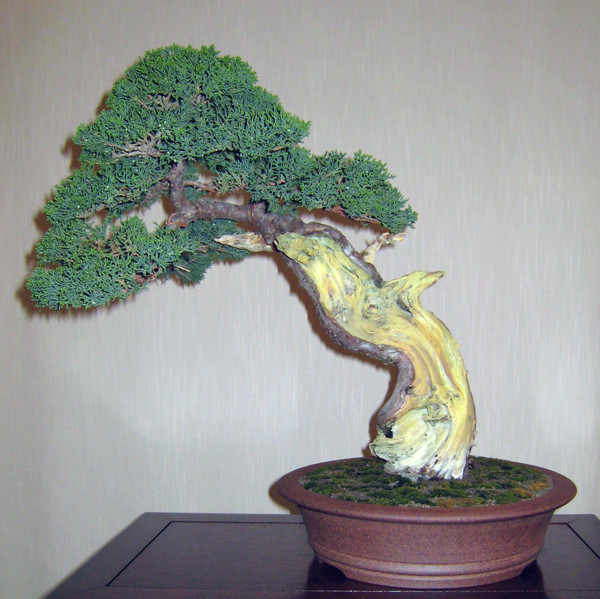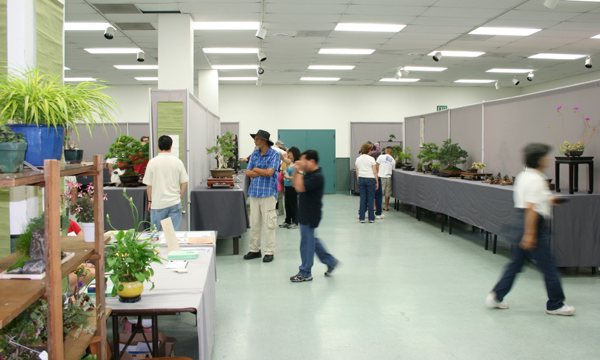February 2009 Newsletter
President’s Message
What Season Is It? (And Other Club News)
By Ken Fuentes
|
Welcome to the unpredictable California weather. I look at my trees and I am sure many varieties are trying to figure out if the season is spring or maybe summer?
In either case, I have been busy refining branch structures on any plant I can get my cutters on. I recommend removing all growth at the end of branches to force energy to the inner branches.
Focus on balance by removing branches that are crowded. Give all leaves enough room to get full sun by removing or wiring branches. My goal this year is to keep all branches open to the sun, giving them the best opportunity to grow.
I would like to thank Raul Garza of Camarillo for the generous donation of his bonsai collection to the club. Some of the trees in this collection go as far back as the early 1990s, so I am confident that there is a tree for everybody. We will have this collection at this month’s meeting, so be sure to bring your check books.
This is a workshop meeting, not a demonstration as originally planned (see Future Club Programs, below). Please bring in as many trees as you can—especially trees that are in progress.
We had a vote for new officers for 2009 and all current officers were re-elected for 2009.
Bonsai-A-Thon XIII
Big GSBF Fundraiser: Help Wanted!
By Marj Branson
The 13th annual Bonsai-A-Thon – the Golden State Bonsai Federation’s giant fundraiser to support the bonsai collection at the Huntington Library, Art Collections, and Botanical Gardens – is just two weeks away. In addition to all the excitement, fun, learning, and shopping opportunities there is a lot of work that must be done to make this event successful.
Our friends at the Descanso Bonsai Society bear most of the burden of organizing and staffing the Bonsai-A-Thon. This year, Descanso member Marge Blasingame is in charge, and I am helping her by recruiting more helpers from our membership.
They are looking for help in various functions. For example, I am working in the food court, but there are other tasks as well. They are especially in need of people to provide “security” in various areas. This means keeping an eye on things like viewing stones to be sure none of them walk away – sadly, this happens all too often at bonsai and suiseki shows – but more often it’s reminding visitors not to touch the trees.
With enough volunteers, no one person has to work very long – usually a one- or two-hour shift on either Saturday or Sunday.
Naturally, whether you can volunteer or not, you are welcome (urged, actually) to attend the Bonsai-A-Thon the weekend of February 28 – March 1.
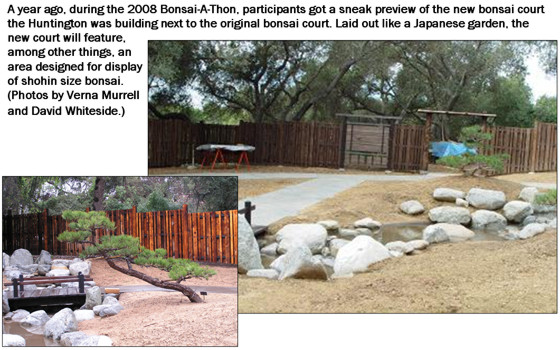
The big splash for this Bonsai-A-Thon is the opening of Huntington’s brand-new Bonsai Court. Completing this project has been a major focus for the Huntington this past year, and Bonsai-A-Thon participants will be among the first to view the results. (See photos of the new bonsai court under construction below. More photos are on page 6.)
Admission to the Bonsai-A-Thon is free, but you do need to have a ticket. Just clip the Participant ticket below (or get one at our February meeting) so you can fill it in and take it with you. You can then get straight into the Bonsai-A-Thon.
If you can help, please contact me to sign up. I have already passed on the list of volunteers from our last meeting, and I will pass on the names of additional volunteers.

Barrett’s Bonsai Tips
Here Are Some Guidelines for Potting and Repotting
By Jim Barrett
|
February and March are probably the best two months of the year for potting and repotting bonsai and training trees from nursery cans to bonsai pots.
Deciding which bonsai needs repotting will depend on how long since its last potting and whether the tree has become root bound. If the pot does not have a major inside lip, you may want to inspect the root ball by lifting the tree out of the pot. Look for a firm root ball with roots visible all around the sides and bottom.
Another indication that the tree needs repotting is the soil lifting above the edge of the pot. This shows that a matte of roots has formed on the bottom and is pushing the tree up. Trident maple bonsai are noted for this phenomenon.
One important reason for repotting is the tree has matured beyond its present container. Either it has grown larger or it deserves a more appropriate pot. There are several things to consider when you decide to proceed:
- Decide which tree or trees you want to pot.
- Choose the pot. And it’s a good idea to have a standby in case the first one doesn’t work.
- Place the wire or heavy plastic screen over each drain hole. Mesh should be at least 1/8 inch holes. Make sure screens are held in place with wire clips.
- If you are going to tie the tree in, now is the time to install the tie wires. Use a wire of sufficient size and strength to do the job.
- Make sure the pot is clean inside and out.
- Have your favorite mix handy.
All of these preparations should be done before the root ball is disturbed. Many bonsai are lost or set back if the roots and soil are removed before everything is ready.
Some hobbyists take just enough soil and roots off to place the tree back in its original pot, leaving room for an inch or so of new soil. Others are more aggressive in cleaning out old soil and prune the roots more severely. Both approaches are valid. It all depends on the condition of the tree, its root system, and the owner’s goals for the tree. This all sounds pretty involved or complicated – it isn’t, if you use common sense and do not get too rough with the tree.
Aesthetic considerations are:
- Tree and pot harmony or appropriateness.
- Is the tree placed in the pot properly?
- Is the tree planted at the proper angle or attitude?
- Is the front of the tree facing the viewer?
After repotting, place the tree in a shaded area to protect it from the wind. In a week to ten days, place it where you would normally. Wait about a month before fertilizing.
Speaking of fertilizers, you should have started fertilizing with organic fertilizer by now. Miracle Grow and fast acting fertilizers are best applied at ½ strength. Time release and slow acting chemical fertilizers, such as Osmocote and Woodace, are safe if you follow printed instructions. Some people add these to their soil mix.
Spray Japanese maples and other trees susceptible to powdery mildew with your favorite fungicide. Watch for aphids on apple, quince, and plum. Watch for spider mites on juniper, black pine, and azaleas. Repot wisteria after flowering.
GSBF Bonsai-A-Thon XIII
Chinese and Japanese Gardens at the Huntington
By David E. Whiteside
If you haven’t yet seen the Japanese and Chinese gardens at the Huntington Botanical Gardens, it’s well worth the visit. And this Bonsai-A-Thon is a perfect time for it because the Chinese garden will be part of the tour that features the new bonsai court. Also, there are some fine penjing on display in the Chinese garden – as well as awesome bonsai in both the original bonsai court and the new one just being opened. These scenes are from last year’s Bonsai-A-Thon tour.
|


